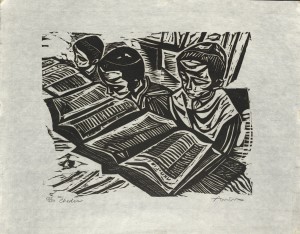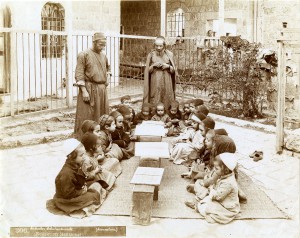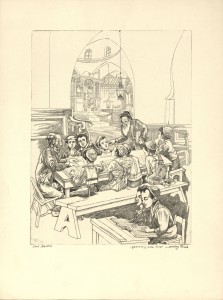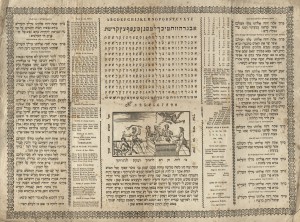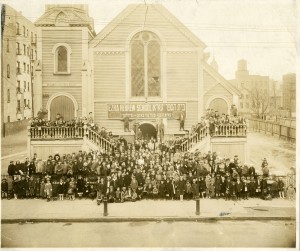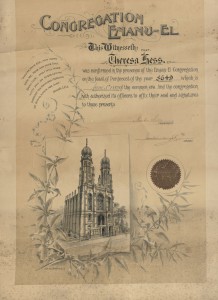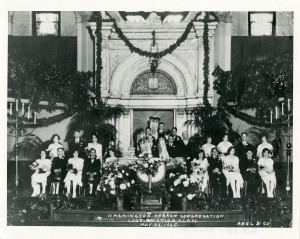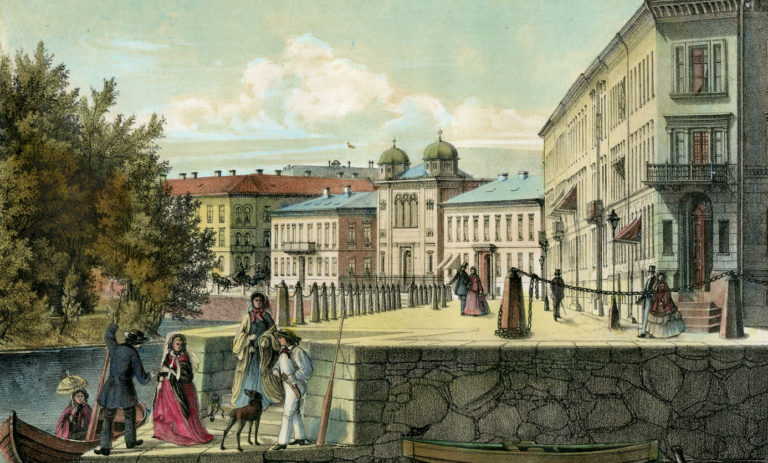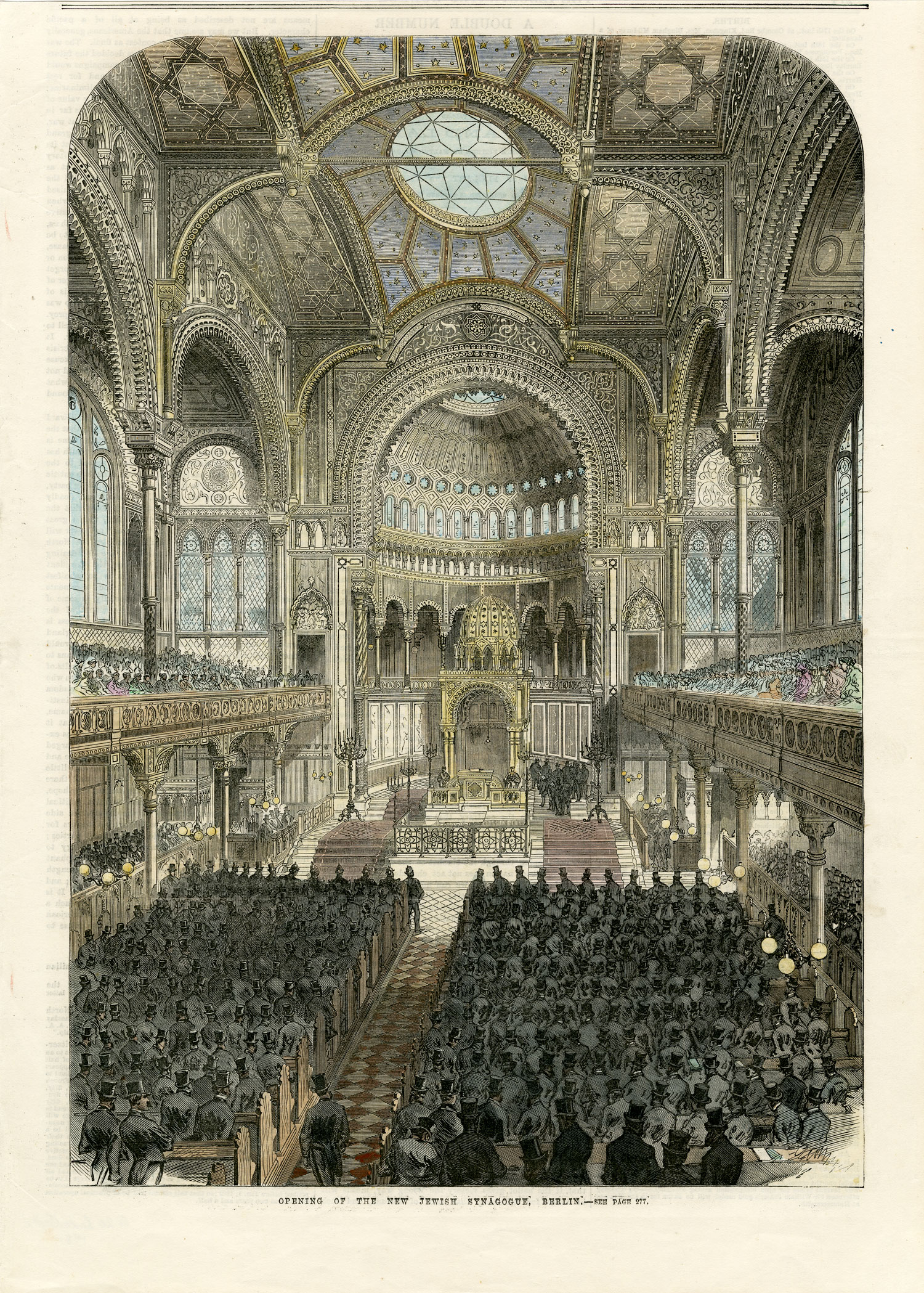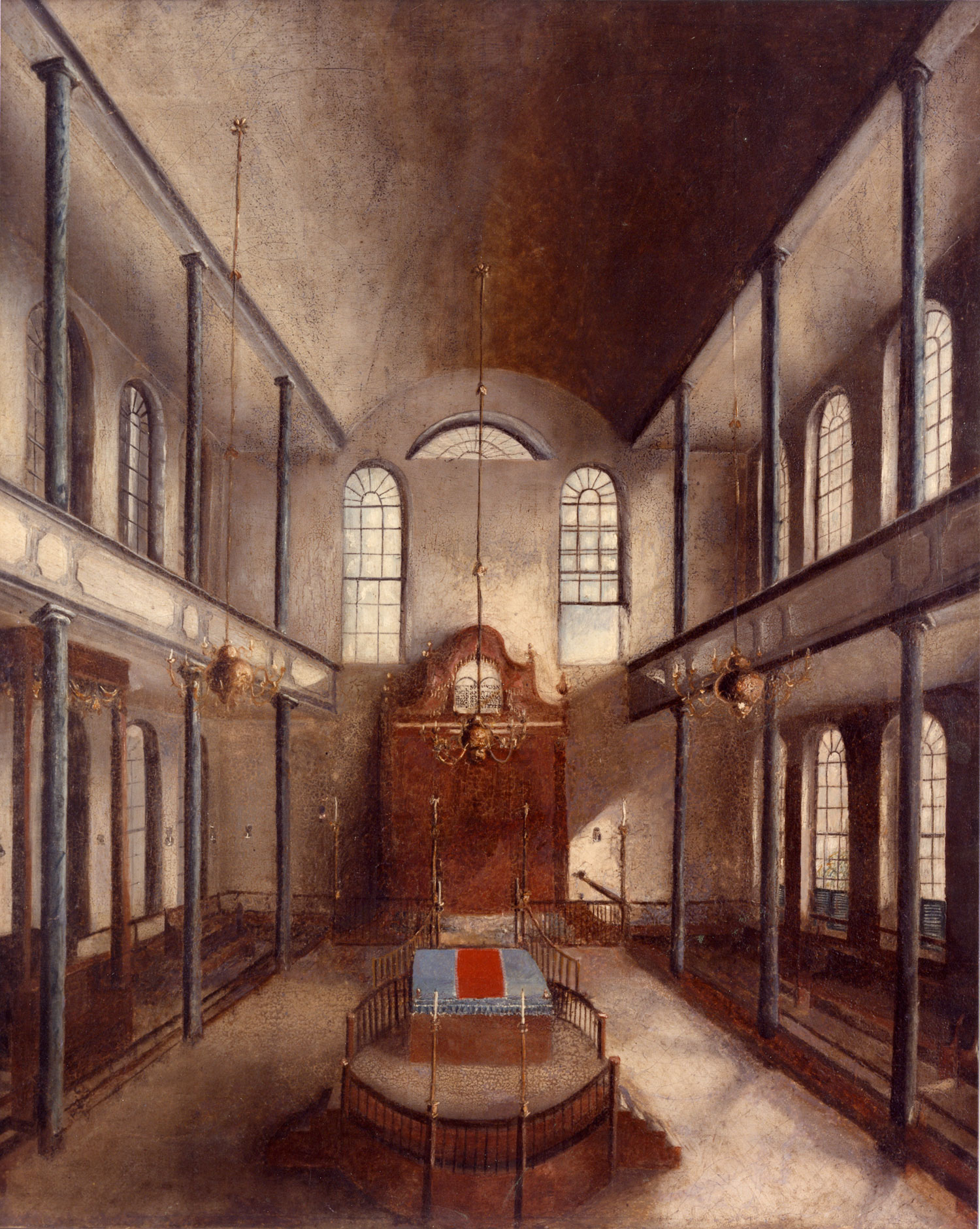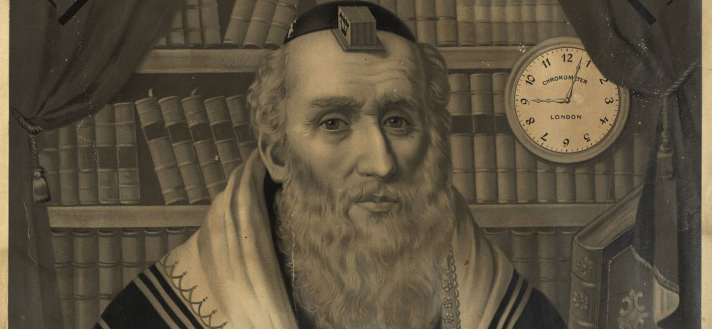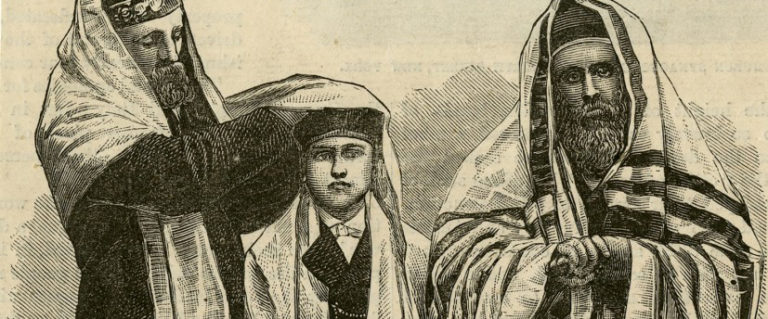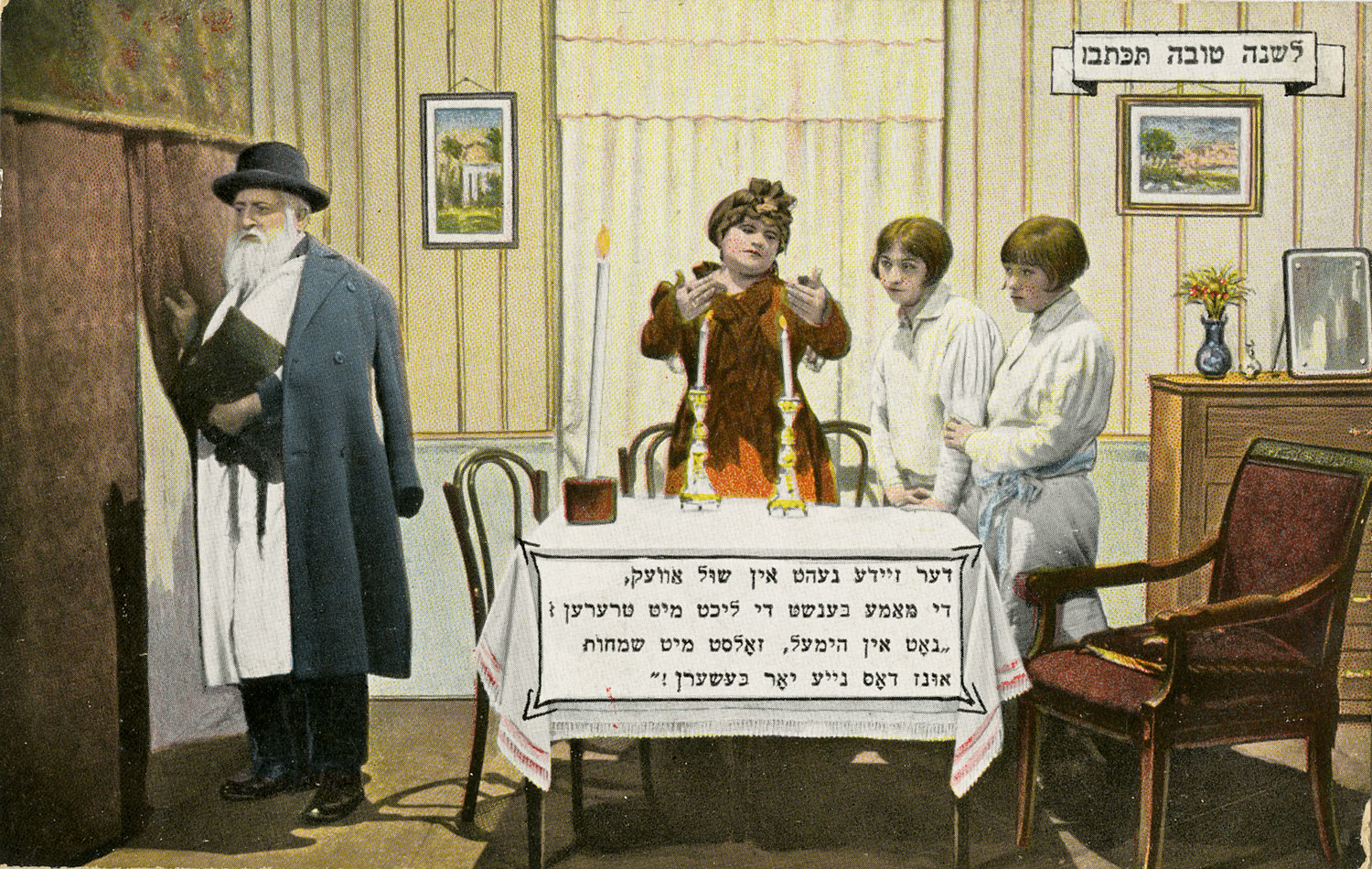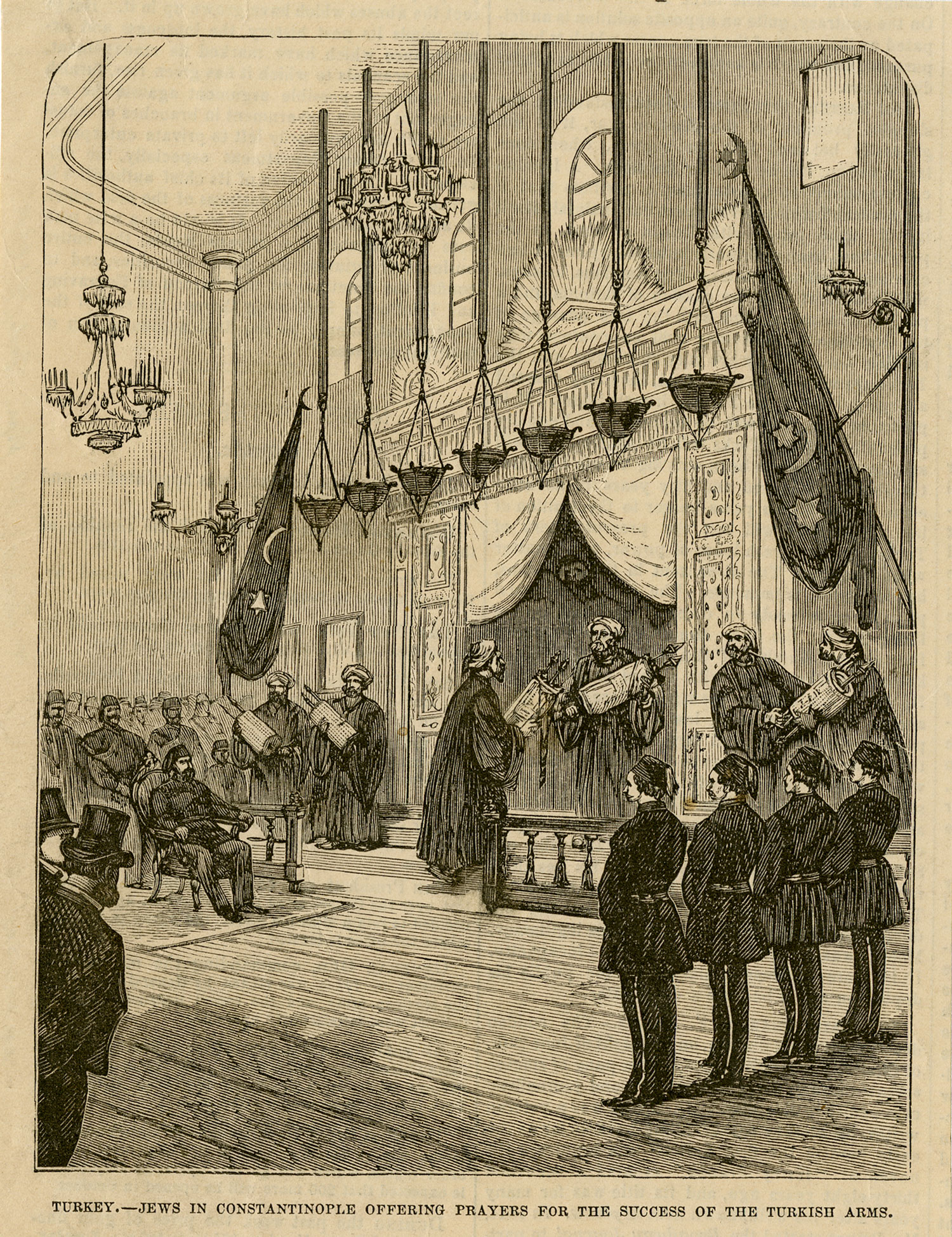Section 9. Education
Education is essential to the practice of Judaism, and one of the primary functions of the synagogue is as a house of study (beth midrash). For observant Jews, this meant the study of the written Torah and, by extension, the oral Torah as transmitted through the Mishnah and Talmud. Many synagogues, when not used for services, provided space for Jewish boys and men to gather to study. In the Middle Ages, Jewish schools were most often associated with particular rabbis and located in synagogues. By the 18th century, many separate study houses were built near synagogues to accommodate the large number of Talmud students. In Germany and elsewhere in Western Europe, purpose-built Jewish schools also existed in many cities. While they were often situated near synagogues, they also had their own small synagogues within to serve the prayer needs of students.
Education for most Jewish boys began at the age of three with the teaching of the Hebrew alphabet. In Eastern Europe, boys attended an elementary religious school known as a cheder (literally meaning “room”) starting at about age five, where they learned—often in appalling conditions—the rudiments of Hebrew and began studying the Torah, the five books of Moses. Girls were mostly educated at home by their mothers. Some learned Hebrew and many more learned to read their spoken language of Yiddish, which is written in Hebrew characters.
In the United States, religious schools were established at synagogues by the mid-19th century, while the system of cheders was continued into the late 19th and early 20th centuries by Eastern European immigrants. Because most American Jewish children attended public schools, Orthodox and then Conservative congregations quickly adopted the model of the synagogue religious school, too. Variations developed within the different branches of Judaism, but all implemented some combination of afternoon, evening, and Sunday classes. In recent decades, the Jewish day school movement has developed as an alternative to public schooling. Jewish day schools combine a full secular curriculum with Jewish cultural and religious instruction.
Since the 19th century, Jewish education has been a crucial precursor to the confirmation ceremony, created by the Reform movement as an affirmation of commitment to the Jewish people. Originally, reformers intended for confirmation to supplant the traditional bar mitzvah ceremony. The custom of holding a confirmation ceremony originated in Germany in 1810, where a boy’s confirmation took place on the Sabbath of his bar mitzvah in a ceremony at home or school. This was followed by the first confirmation of Jewish girls seven years later. From there, confirmation spread to Reform Jewish congregations across Europe over the next three decades before taking hold in the United States. Today, confirmation is still practiced by Reform congregations, though often it is of less importance than the traditional bar or bat mitzvah, which has regained popularity.
